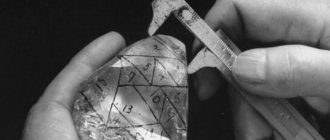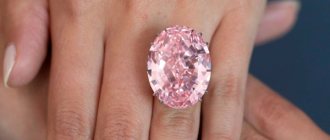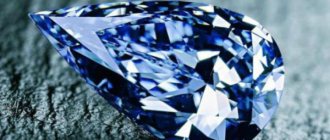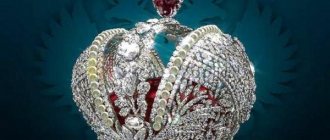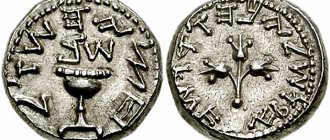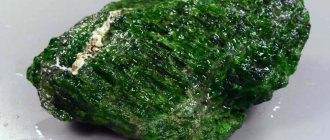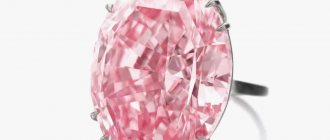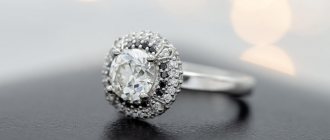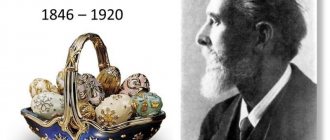One of the most famous diamonds in the world has never been sold for money. Found before our era, it is part of the royal crown of Great Britain, and the Indian government continues to try to return the treasure. There is no exact information about when and under what circumstances the jewel was found, the possession of which was paid for in blood. We know only legends, but how much fiction and truth there is in them, one can only guess.
The Hindus have an instructive story about a famous stone. Philosophical history contains a deep meaning that concerns every person.
Diamond Kohinoor: Indian parable about happiness
An Indian legend tells of a peasant who found a beautiful stone in his garden and gave it to his children. Delighted by the unusual toy, the children first became interested in the find, and then threw it on the windowsill.
One day, a monk knocked on the house of a poor man, looking for a place to stay for the night. The owner did not refuse, and the guest said that there are places on earth where diamonds are hidden in huge quantities. And if you are not lazy, you can become fabulously rich, but the peasant wastes his life working on a plot where there is nothing. When the monk left, the poor man, shocked by his words, thought for a long time, and the desire to catch luck by the tail grew stronger every day. He sold his plot, and ordered his wife and children, whom he left in the care of neighbors, to wait for him. The peasant assured that he would return rich and fulfill all the wishes of his relatives.
For many years he wandered in search of happiness, worked hard, but during this time he never found the place where countless treasures lay. However, the employee already had a clear idea of what a diamond is and what it looks like. After many years, the disappointed and penniless prospector returned home, where in the hut lay on the window a forgotten stone, once found on the land that the poor man had sold. He couldn’t believe his eyes – the rare and expensive gem shimmered with different facets. And then the peasant, who had lost his health, remembered when and where he found the treasure. Exhausted by hard work, the man searched throughout Europe for the wealth hidden under his feet. The land he sold yielded one of the most beautiful stones in the world - the legendary Kohinoor Diamond.
The parable tells that people are looking for happiness all over the world, but it is waiting for them at home.
CULLINAN I
Cullinan I, the largest piece of the original diamond, is also known as the “Great Star of Africa.” This is a 530.20 carat D color pear cut diamond. Number of faces - 76. Dimensions of the stone - 58.9 x 45.4 x 27.7 mm. The Cullinan I was for a long time the largest diamond in the world, until another large stone weighing 755.50 carats, called the Golden Jubilee, was discovered in 1985 at the same mine. After cushion cutting, the Golden Jubilee's weight was reduced to 545.65 carats, which is more than 15 carats greater than the weight of the Cullinan I. However, the Golden Jubilee is brown in color, while the Cullinan I is colorless. Therefore, among colorless diamonds, it remains the largest in the world.
At first, Cullinan I was used as a teardrop pendant for luxury brooches, combining it with Cullinan II or Koh-i-Nurr, worn by Queen Consorts Alexandra and Mary. In 1910, the jewelry house Garrard proposed to remake the royal scepter by mounting Cullinan I in it. Previously, the scepter made for the coronation of Edward VII contained a large round aquamarine at the pommel. Kulinan I still adorns the royal scepter and, like all royal regalia, is kept in the Tower Castle. The design of the scepter is made in such a way that the stone can be easily dismantled and used for another purpose.
Legends and traditions
It is believed that the "blood" stone was found in India in 56 BC. According to legend, it was found in the mines of Golkogda, the ancient fortress of the country. It was a huge stone, weighing more than 600 carats. True, modern scientists agree that this figure is somewhat exaggerated.
Many Hindus believe that the gem fell from the sky, and the god Krishna placed his curse on it: the diamond should protect virtuous and pure-minded owners, and those who get it dishonestly will suffer for the rest of their lives. Be that as it may, powerful lords fought for the right to possess the treasure, and of the 20 owners of the stone, eighteen died.
Who is the rightful owner of the diamond?
In the 20th century, a real verbal battle broke out over the Koh-i-nor and its rightful owners. In 1947, the Indian government demanded the return of the diamond. The Cabinet of Ministers, who ruled Orissa, also laid claim to the gem, declaring that it belonged to the god Jagannath. The custodian of Ranjit Singh's valuables claimed that the diamond was their property. Pakistan's claim to own the diamond has been disputed by India. And soon after, Tehran's leading city newspaper declared that the jewel should be returned to Iran.
Sir Olaf emphasized that Koh-i-nor was in Mughal possession in Delhi for 213 years, in Afghan possession in Kandahar and Kabul for 66 years, and in British possession for 127 years. Taking into account historical events, it is difficult to establish which of the applicants can be considered the rightful owner of the stone. But on the other hand, based on the gemological aspect, the diamond must still belong to India, the country in which it was mined.
History of the talisman
The great Raja of the Malwa family took possession of a jewel that has the longest history compared to other diamonds. For several hundred years, the Kohinoor Diamond was passed down from generation to generation. The rulers valued the treasure that was inherited and believed that it was a magical stone that protected their family and granted power over the whole world. For a long time they wore it in their turbans, fearing the theft of the talisman, and, as it turned out, for good reason. As soon as the king of gems was captured by the cunning Shah, a descendant of the Khili clan, who lulled the Raja's vigilance, the royal dynasty was plundered. The priceless amulet, which moved with its new owner to Delhi, stopped keeping her.
Cullinan VIII
The Cullinan VIII is a 6.8 carat diamond. Although the Cullinan VIII is commonly described as an emerald cut diamond, the long rectangular facets and step cuts characteristic of the emerald cut are not found in the Cullinan VIII. It appears to be a rectangular shaped mixed cut diamond rather than a regular emerald cut diamond. In 1911, Garrards mounted the Cullinan VIII on a platinum brooch, similar in style to the Cullinan V brooch. Subsequently, in 1925, the brooch was added with an 11.50 carat Cullinan VI pendant and this combination became known as the Cllinan VI and VIII brooch (image see above). However, the Cullinan VIII can also be removed from the brooch and mounted as part of a Delhi Darbar corsage brooch or attached to a Cullinan brooch.
New owners of the diamond
After India was captured by the Great Mughals, who enslaved many states, the padishah Shah Jahan, who immortalized his name by building the beautiful Taj Mahal, took possession of a fabulous treasure. The ruler, who had a keen sense of beauty, dreamed of an expensive throne, and his wish came true. Talented jewelers and artists worked for a long time on this real work of art and created a stunning masterpiece. The peacock throne, the back of which resembled the iridescent tail of a royal bird, was decorated with jewelry, gold and silver, and above the head of the padishah shone the purest Kohinoor diamond, which had lost weight after cutting.
For three centuries, the stone brought good luck in battles, bestowed wealth on the powerful Mughal Empire and at the same time sowed discord. The powerful Shah Jahan ruled until his son grew up and wanted to take power from his father. The son killed his brothers and imprisoned the padishah, fearing the wrath of the treasure, which had magical powers. So the ruler, whose fame thundered throughout the world, died in the casemates from grief, and his expensive throne, which became a symbol of the monarchy, was dismantled into pieces and sold.
LiveInternetLiveInternet
Quote from TimOlya's message
Read in full In your quotation book or community!
History of the Kohinoor Diamond, Kohinoor, Koh-i-Noor, Koh-i-Noor..(Mountain of Light)..
History of the Kohinoor Diamond.
Copy of an ancient Indian cut diamond
Kohinoor
(Persian کوہ نور, Urdu کوہ نور, Hindi कोहिनूर - “Mountain of Light”) is a 105-carat diamond and diamond that is currently in the crown of Queen Elizabeth (Great Britain), one of the most famous diamonds in history[.
One of the largest diamonds included in the British Crown Treasures (the largest is “Cullinan I”)
Initially it had a slight yellow tint, but after recutting in 1852 it became pure white
The history of Kohinoor can be traced reliably from 1300. Legends tell about much earlier events associated with this stone.
Kohinoor in its old form, before 1852. Illustration from the encyclopedia
Kohinoor in a new form, after 1852. Illustration from the encyclopedia
For several centuries, “Kohinoor” adorned the turban of rajas from the dynasty of the state of Malwa. Legend said that if the "Mountain of Light" ever fell from the Rajah's turban, the entire people of Malwa would become slaves. This is what happened in 1304, when Malwa was conquered by the Delhi Sultan Ala ad-Din. Among other captured treasures, “Kohinoor” also became the property of the winner. However, later the diamond again returned to the rulers of Malwa - Bikeramit (Vikramaditya), the Raja of Gwalior, became its owner.
Gwalior Fort,
According to other legends, the origin of Kohinoor is associated with the sons of Ala ad-din - Khizr Khan, Shihab-ud-din-Umar and Qutub-ud-din-Mubarak. After the death of their father, they became contenders for the kingdom and decided to divide the entire territory into three parts. To this end, they set off on a journey through their father's domain. In the mountains they were caught in a downpour, and they took refuge from the weather in one of the caves. Entering inside, they saw that the cave was illuminated by an unusual light that came from a diamond lying on a granite stone. The brothers argued over who should own it and began to pray to the gods: Khizr Khan to Vishnu, Umar to the soul of the world Brahma, and Mubarak to the destroyer god Shiva. Shiva heard Mubarak's prayer and fired lightning into the diamond, after which it split into three parts. Each of the fragments exceeded seven hundred carats. Khizr Khan took for himself the largest part, which he called “Derianur” - “sea of light”. Umar named his stone “Kohinoor” - “mountain of light”, and Mubarak named his stone “Hindinur” - “light of India”.
After the brothers ascended the throne, misfortunes began in the country. Famine and epidemics claimed tens of thousands of lives. To gain Shiva's favor, Mubarak sold his diamond to the Shah of Persia. With the money he received, he built a temple and installed a marble statue of Shiva three times tall at the entrance. But the misfortunes continued. And then Khizr Khan and Umar ordered the stonemasons to insert the Derianur and Kokhinur diamonds into the eye sockets of the statue. After which all disasters immediately stopped.
Subsequently, “Derianur” and “Kohinur” were built into the throne of the Persian Shah, who attacked India and, among other trophies, captured these diamonds.
Over time, “Kohinoor” has acquired numerous legends. It was said that it was found about 5,000 years ago in South India, in the famous mines of Golconda, and its first owner was one of the legendary heroes of India, Karna, mentioned in the ancient Indian epic “Mahabharata”.
Ruins of Golconda
Karna at Kurukshetra (right) commands the Kaurava army in battle with Arjuna (left). Anonymous, India,
In 1526, India was invaded by the troops of Sultan Babur, a descendant of Tamerlane. With him was his son, the warrior Humayun, the future founder of the Mughal dynasty. In the decisive battle of Panipat in the same year, the Indian troops were defeated. In this battle, Raja Bikeramit was killed and his family was captured while trying to escape from Agra. Trying to appease the winner, the Raja's wife handed over all the treasures to Humayun, including the Kohinoor. The conquerors spared the Raja's family.
Babur
Warriors of Babur
Humayun solemnly presented the diamond to his father, but he, having admired the diamond, returned it to his son. From then on, the Mughal rulers wore the Kohinoor on their turbans until it was placed in the famous Peacock Throne. People believed that as long as the diamond, as an indestructible emblem, shone over the throne of the great Mughals, the dynasty would continue.
Nasir ud-Din Muhammad Humayun
Babur
The power of the great Mughals soon spread throughout India. Under Sultan Babur's grandson Akbar, the country became united as never before. Akbar was tolerant of different religions and treated conquered peoples gently. Being an educated man, he patronized sciences and art. Schools were built throughout the empire.
Akbar I the Great
During its peak period, under Shah Jahan, the Mughal Empire created such masterpieces as the pearl mosque in Agra and the famous Taj Mahal. But the main treasure of the dynasty remained the Peacock Throne.
Tavernier in oriental dress
The description of the throne is known to us from the travel notes of a number of travelers, including Jean-Baptiste Tavernier. So, according to his descriptions, the Peacock Throne was located in a special hall where seven more thrones were placed. It stood out among them, as it was installed on a massive marble dais, decorated with precious stones. The seat of the throne was supported by six massive golden pillars. Silver poles inlaid with gold and jewels rose upward, supporting an openwork canopy woven from thin silver wire in the form of floral ornaments - vines, leaves and flowers with petals of green emeralds, buds of crimson rubies and a core of blue sapphires. Their combs and tails were woven from gold and silver wire and decorated with precious stones, all of which were selected to imitate the plumage of real, living peacocks. Large diamonds served as the eyes of the birds. Between the peacocks, the “Kohinoor” was fortified so that it was located just above the ruler’s head.
The Peacock Throne on which Shah Jahan sits.
Jahan had four sons. The elder brother Aurangzeb wanted to seize his father’s throne, and with it “Kohinoor”, because he believed that by possessing the diamond, he would gain power over the whole world. After an unsuccessful attempt to incite his brothers to revolt, Aurangzeb seized power as a result of a coup, killing the brothers, and imprisoned his father, Jahan, in the citadel of Agra, turning the throne room into a prison. Aurangzeb did not dare to kill his father or take the Kohinoor from him by force, fearing to proclaim himself emperor due to possible uprisings.
Aurangzeb
For seven years Jahan was imprisoned among his treasures. When Aurangzeb felt secure enough on the throne, he demanded that his father send him the largest gems from the treasures of the throne room to adorn his turban in order to officially ascend to the throne. Jahan died in 1666, in the arms of his daughter, in his bejeweled prison.
The resting place of Shah Jahan and his wife is the Taj Mahal mausoleum in Agra
In 1739, during the reign of Shah Mohammed, Persian troops led by Nadir Shah also invaded North-West India. They captured all the Mughal treasures, including the Peacock Throne. But the main treasure of the throne - “Kohinoor” - was not there.
Nadir Shah
Thousands of people were sent all over the place. Anyone who indicated the location of the diamond was promised a large reward. One of the former inhabitants of the harem said that “Kohinoor” was hidden in Muhammad’s turban. During the feast, the Shah of Persia approached Muhammad with an offer to exchange turbans as a sign of friendship. In the east, such a custom has existed since time immemorial. It was impossible to refuse this offer, and Muhammad had no choice but to offer his turban to Nadir Shah, and with it the diamond. The Turk, without waiting for the end of the ceremony, hurried to his room, unfolded his turban and saw the diamond. shouted: “Mountain of light!” (in Persian “koh-i nur”). This is how the stone got its name.
Nadir Shah returned to Persia. During his reign, he did not escape the riots, poisonings, and betrayals that haunted all the owners of Kohinoor. He practically went crazy, not trusting anyone, and was killed in 1747 by the leader of the Kurds, Salah Bey.
After the death of Nadir Shah, his youngest son, Prince Roch, seized the throne, but was unable to maintain power and was overthrown. However, he managed to hide the Kohinoor and refused to indicate the location of the diamond, even under torture. Rokh handed the diamond to Afghan Ahmad Abdali. So “Kohinoor” ended up on the territory of Afghanistan, in Kandahar, where Ahmad Abdali (Durr-i-Dauran) seized the throne and founded the Afghan state, becoming the founder of the Durran dynasty.
Ahmad Shah Durrani
,
Ahmad Shah DurraniEstablished the Durrani Empire in 1747 at Kandahar, Afghanistan
After Ahmad's death in 1773, his son Timur became the head of the dynasty, and moved the capital to Kabul. After Timur's death, power passed to one of his 23 sons, Zaman Mirza. Next comes another palace coup, as a result of which power passes to Zaman Mirza’s brother Shuja-ul-Mulk. Zaman Mirza is tortured, trying to find out the location of the diamond, and is blinded. In prison, Zaman Mirza hollows out a hole in the wall and places a diamond there, covering it with plaster. A few years later, it is discovered by a jailer, from whom the diamond came to Shuja-ul-Mulk. And again a coup follows, and the throne passes to his brother Mahmud. Mahmud blinds Shuja-ul-Mulk and throws him into prison. He does not reveal the location of the stone and believes that as long as he has the stone, both the kingdom and power will return to him. He escapes from prison, taking with him jewelry and Kohinoor. Together with his family, he takes refuge in Lahore, with Ranjit Singh, nicknamed the Lion of Punjab.
Ranjit Singh
When the Raja found out about the diamond, he decided to find out its location through torture, and he decided to apply torture not to the blind Shuja-ul-Mulk, but to his wife. The woman could not stand it and decided to give up the diamond, with a number of conditions: the release of the prisoners, a guarantee of their safety and a lifelong pension. Singh agreed. He almost lost his mind when the “Mountain of Light” was in his hands. He paid Shuja-ul-Mulk 125 thousand rupees and gave him a lifelong pension of 60 thousand rupees per year.
The lithograph shows one of Maharaja Ranjit Singh's most beloved horses with the head of an officer of his stable and his collection of fabulous gems including the Kohinoor diamond marked No. 1
After taking possession of Kohinoor, Raja Singh united Punjab and created a strong army. He also planned to get rid of English influence in India. However, being an intelligent and far-sighted politician, he understood that he could not cope with the growing power of the British. Singh, having analyzed the rather bloody history of Kohinoor, decided that it was best to get rid of it. He decided to present it as a gift to the temple, but did not have time because he died. His heirs did not know about this decision. After the death of the Rajah, years of anarchy and unrest followed in the country. The Rajah's army marched against the British, and after a series of temporary successes, was defeated.
Raja Lal Singh, who led the Sikh forces against the British during the First Anglo-Sikh War of 1846
Maharaja Duleep Singh entering his palace in Lahore, accompanied by British troops after the First Anglo-Sikh War
(1845-46)
"Sikh trophy guns" formation up ", in the fortress of Monghyr"
In 1849, the Lahore treasury came into the possession of the British authorities. The diamond first came to the Governor-General of India, Sir John Lawrence, and was almost lost - the governor did not attach importance to the value of the stone and only a faithful servant found it among his master’s belongings. On April 6, 1850, the Kohinoor left India and reached Britain on July 2, 1850. The valuable cargo was accepted by the acting Chairman of the Board of Directors of the East India Company, J. W. Logg, who handed over the diamond, among other Indian valuables, to Queen Victoria. She left this entry in her diary:
The jewelry is magnificent. They belonged to Ranji Singh and were found in the Lahore treasury. I am happy that from now on they belong to the British Crown and I will make sure that the diamonds become part of the crown.
Victoria
In 1851, the diamond was exhibited at the Great Exhibition in London. Despite the fact that the precious stone had a bad reputation as an object that brought misfortune to the owner, the queen ignored prejudice and wore it in her crown. Indian sources write that Queen Victoria felt embarrassed in front of India for exporting the Kohinoor stone. In 1854, she invited Ranji Singh's 15-year-old only son and heir, Duleep Singh, to Britain, where she gave him a pension of 15 thousand rupees a year, contrary to the recommendations of the government, which objected to such an amount.
Duleep Singh, who handed over control of his state at the age of 11, was brought up by an English teacher, converted to Christianity and spoke fluent English. During his stay in England, Duleep Singh, at a personal meeting with Victoria and at her request, announced the transfer to the queen of a stone that she already had:
It is my greatest pleasure, madam, to have the opportunity, as your loyal subject, to hand over the Koh-i-noor to my ruler myself.
Until 1852, Kohinoor still retained the shape of the ancient Indian cut. English jewelers decided that the new finish would make the stone sparkle again. In 1852, the diamond was recut in Amsterdam and acquired a flat shape. The weight of the stone during recutting decreased from 191 to 108.9 carats. The expediency of the recut raised a lot of doubts and criticism, since the operation itself on the most famous diamond in the world, with significant historical and cultural value, which ultimately lost more than 42% of its precious mass, is very questionable. In 1853, the Kohinoor was set into the British Royal Crown as part of 2,000 smaller diamonds. In 1911, the diamond was transferred to the crown, which was made for Queen Mary's ascension to the throne. In 1937 it was again transferred to the new crown for the enthronement of Queen Elizabeth, where it currently resides.
Now the Kohinoor, part of the Crown of Queen Elizabeth, is kept in the Tower. In 2002, during the funeral ceremony of Queen Mother Elizabeth, a diamond crown was placed near the coffin during the funeral procession on the streets of London
To Queen Maria
https://ru.wikipedia.org/wiki/%D0%9A%D0%BE%D1%85%D0%B8%D0%BD%D1%83%D1%80
Another painful death
In 1739, the Kohinoor diamond, whose history is inextricably linked with human tragedies, changed its owner again. It was captured by cunning by the Persian ruler, who lured the magic stone from Shah Mohammed. The ruler, who received the treasure dishonestly, was stunned by the blinding beauty of the shining stone. It is believed that it was then that the previously unnamed talisman received its name (in Farsi, koh-i-noor means “mountain of light”). However, the amulet was not kept by the one who received it through deception: a few years later, the king of Persia became clouded in his mind and suffered a painful death from his entourage.
The name "Koh-i-noor" means "Mountain of Light"
After the transfer of the Peacock Throne to Nadir Shah, one of the harem workers revealed the location of the diamond: the Shah constantly wore the gem in his turban. Nadir Shah decided to organize a holiday, timed to coincide with the return to the throne of Muhammad Shah, during which he suddenly invited him to exchange turbans, as a sign of brotherly ties and eternal friendship. Naturally, Muhammad could not refuse. After the exchange, entering his apartment at night, Nadir Shah unwrapped his turban and discovered a diamond there. Looking at the stone, he exclaimed: “Koh-i-nor!”, which meant: “Mountain of light!”
Gift to the Queen
So the Kohinoor diamond traveled all over the world, bringing only grief and failure. Why did it cease to be a talisman for its owners? His magical power dried up as soon as he absorbed the blood of people. And although no one else believed in the protective powers of the amulet, its unique beauty fascinated and drove people crazy, forcing them to give their lives for the treasure. The stone visited Persia, Afghanistan, returned to India again, and when the country became a British colony, it was presented as a gift to Queen Victoria.
The British, who had heard about the bloody history of the diamond, advised the empress to abandon the treasure with which so many deaths were associated. However, the ruler did not listen to the advice and did not part with the stone for several years. One day it seemed to her that the dull diamond lacked brilliance, and the queen demanded a new cut.
Diamond's Journey to England
The next sixty years of the history of this stone became the most bloody and cruel. The diamond eventually came into the possession of Maharaja Duleep Singh, son of Maharaja Ranjit Singh, who led Punjab to British annexation after two Sikh wars. On March 29, 1849, the British flag was hoisted in Lahore, and Punjab itself was declared an Indian part of the British Empire. Moreover, one of the conditions of the Lahore treaty read: “The precious stone called “Koh-i-nor”, taken by Maharaja Rajit Singh from Shah Shuji-ul-Mulk, must be handed over by the Maharaja of Lahore to the Queen of England.
Dr. Sir John Loughin was authorized to remove the Koh-i-nor from Toshakhana and take guardianship of the young Duleep Singh. The stone was officially handed over to the Punjab government, which included Sir Henry Laurens (1806-1857), his younger brother John Laurens (later Lord Laurens, the man who founded the future Lahore railway station), and K.K. Oil.
Koh-i-noor sailed from Bombay on the English warship Medea. It was placed in an iron box and, with a diplomatic courier bag, delivered for storage to the State Treasury.
— Advertising —
For security reasons, this news was not disclosed either among treasury employees or on the ship. Even the ship's commander, Captain Lockyer, did not know about this. By the way, the voyage of the Medea turned out to be extremely risky due to cholera that broke out on board the ship in Mauritius, which is why local residents demanded its urgent dispatch, asking the ruler to otherwise open fire and destroy the ship. After leaving Mauritius, the ship encountered a severe storm that lasted almost twelve hours. At Plymouth the passengers were brought ashore, along with the mail, except Koh-i-nor, which went on to Portsmouth.
From there, two officials handed the diamond over to the East India House to the Company Manager and his deputy.
The cut that caused public outrage
In the mid-19th century, it was given to a Dutch jeweler who worked together with the royal mineralogist. After a month and a half, the Kohinoor diamond, the photo of which does not convey the radiance and play of edges, lost its original appearance and more than half of its previous weight. Experts agree that the processing of the diamond was unnecessary. The vandalism of the British government caused a wave of outrage to sweep across the country. Many considered it blasphemous to cut a real work of art with a rich history. The stone lost not only its original attractiveness, but also its jewelry value: its weight dropped to one hundred carats.
Curiously, there is a belief that cutting, which cannot be interrupted for a long time, must be carried out by one master. It is important that the jeweler does not get sick while working and is cheerful. The Dutch master was looked after like a small child: he was fed healthy food by the hour, his sleep was carefully guarded and he was entertained so that the specialist would not get bored.
Kohinoor diamond cut
Prince Albert (Prince Consort) and Sebastian Garrard stated that the stone was poorly cut and had the wrong rose shape for a diamond. It was decided to turn to experienced diamond cutters. A small steam-powered machine was installed in Garrard's shop, and two gentlemen, Mr. Voonsanger and Mr. Fedder, went to London to have the diamond recut.
As a result of cutting, which lasted 38 days and cost $40,000, the stone was freed from yellowness and became much lighter.
The result was an oval-shaped diamond weighing 108.93 carats. Weight loss was 43%.
The star cut consisted of 33 main facets, including the platform. The pavilion contained eight more faces, and accordingly the total number of faces was 66.
Official handover of the stone
The Queen made sure in advance that no one could take the gem from Great Britain. She legitimized the ownership of this incredible treasure by inviting the son of the powerful Maharaja, Dalip Singh, who converted to Christianity, to London. He confirmed the transfer of the stone and stated that he was happy to be personally present at such an important historical event. Since then, England has considered itself the rightful owner of the jewel, officially donated to the British Empire.
The sparkling Kohinoor diamond in the crown of the Empress of Great Britain was recognized as a regalia of national importance. Victoria wore it for more than 50 years, and no misfortune happened to her. Now the real treasure is kept in the Tower, in the Royal Family Jewelry Museum.
Cullinan VII
The Cullinan VII Diamond is also a marquise cut stone weighing 8.80 carats. It is part of an asymmetrical pendant necklace - négligée
from the headset (parura) of Delhi Darbar. In the pendant it is combined with a larger pear-shaped emerald.
The Delhi Durbar Necklace was Queen Mary's favorite piece of jewelry and she usually wore it with other parura components. Queen Elizabeth also often uses this necklace, pairing it with the Vladimir tiara with emerald pendants.
Demand to return the treasure
The story of the stone does not end there. After India became an independent country, it demanded that Britain return the legendary Kohinoor diamond, but was firmly refused. The Prime Minister of the state published an open letter in which he addressed the English government. He was supported by other countries who wanted the masterpiece of jewelry to belong to India again.
In 2015, a new wave of indignation arose. The initiative group has prepared a lawsuit against Queen Elizabeth II, seeking the return of the national treasure. It was noted that the artifact was taken out of India by the British under dubious circumstances.
The UK government has once again rejected the idea of giving away the Kohinoor diamond. This will entail other groundless demands, as a result of which the country may lose the main museum exhibits.
Cullinan VI
Cullinan VI is a marquise cut stone weighing 11.50 carats. King Edward VII bought the diamond from Ussher and gave it to his wife Queen Alexandra. She set and decorated the front cross of the hoop of her crown with this diamond. After the death of Queen Alexandra in 1925, Cullinan VI was inherited by Queen Mary. She decided that Cullinan VI would look best as a pendant in combination with Cullinan VIII. This combination is called the Cullinan VI and VIII brooch.
The setting of these diamonds, as well as the stones mentioned above, is adaptive, i.e. they can be easily separated and inserted into other decorations. The brooch is now in the possession of Elizabeth II, who inherited it from her grandmother, Queen Consort Mary, and is also one of her favorites.
comments
Lera The terrible story of the Kohinoor stone makes you shudder from the realization of such inexplicable facts that only women can wear it.
It would seem like a precious stone, it’s just a decoration. It’s good that this stone fell into the hands of the Queen of England, this wise young lady disposed of it correctly, now the stone has an owner and it no longer harms anyone. Valentina What a mysterious story, and there are a lot of such cases! I believe that every thing has its own energy. I had earrings that I got from my grandmother, and they just lay there for a long time. One day I wanted to put them on; A lot of troubles happened to me that day, but I didn’t immediately think about the earrings. The next time I wore these earrings, I was robbed (for the first time in my life). I decided to never wear them again. Either a strange coincidence or mysticism...
Katya I don’t believe in such rumors, every precious stone has some kind of incredible story or even a curse. Denying yourself the purchase of jewelry just because of this is very stupid.
Anya A fascinating story, I read it with great pleasure. I wear a pendant with this stone, but I have never noticed any special effect on my body. Now I'll pay attention.
